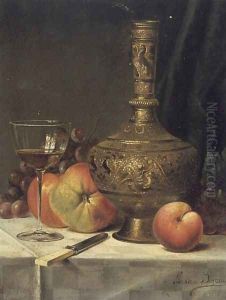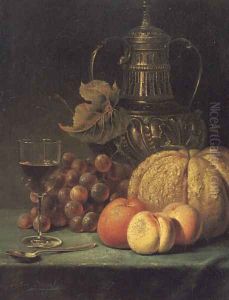Gaston Derval Paintings
Gaston Derval was a French painter born in 1872. His artistic journey began at a time when France was at the forefront of the art world, with Paris being the hub of innovation and creativity. Derval's work was primarily influenced by the movements of his time, which included Impressionism and Post-Impressionism. These movements emphasized the use of light and color to depict scenes in a way that was different from the realistic portrayals of the previous generations.
Derval received his formal education in the arts at reputable institutions, which provided him with a solid foundation in the techniques and theories of painting. His work, like that of his contemporaries, often captured the changing landscapes and urban life of France during the late 19th and early 20th centuries. He was known to explore various subjects, including Parisian street scenes, rural French landscapes, and portraits. Though not as widely recognized as some of his peers, Derval contributed to the vibrant tapestry of French art during a period of great transformation.
The outbreak of World War I and the subsequent changes in the social and political landscape of Europe had a significant impact on artists of the time, including Derval. The war brought about a shift in the mood of artistic expression, and many artists of the era reflected the turmoil and suffering of the period in their work. However, Derval's oeuvre remained relatively consistent, as he continued to focus on the beauty of everyday life and the play of light and shadow.
Gaston Derval's career spanned several decades, and throughout his life, he exhibited his work in various salons and galleries. He was a member of the Société des Artistes Français, which was an important association for artists in France, organizing annual salons where members could exhibit their work. These exhibitions were crucial for artists to gain recognition and to sell their work to collectors and the public.
Derval passed away in 1943, in the midst of World War II. Although he did not achieve the same level of fame as some of his contemporaries, his paintings remain a testament to the enduring qualities of Impressionist and Post-Impressionist art. His works are part of collections in France and beyond, allowing future generations to appreciate his contribution to the rich history of French painting.

